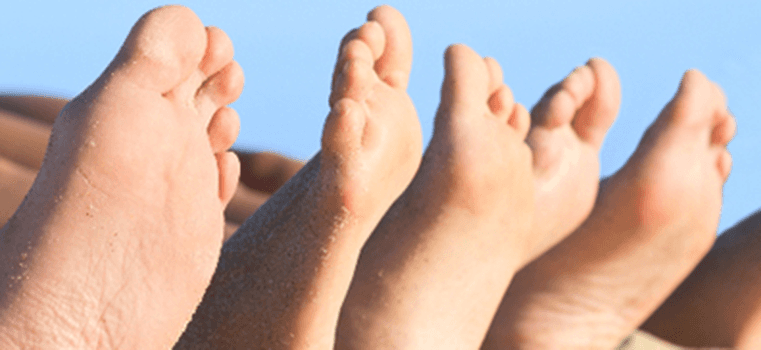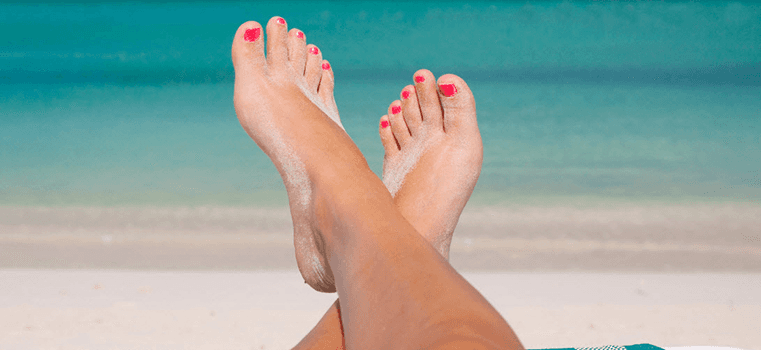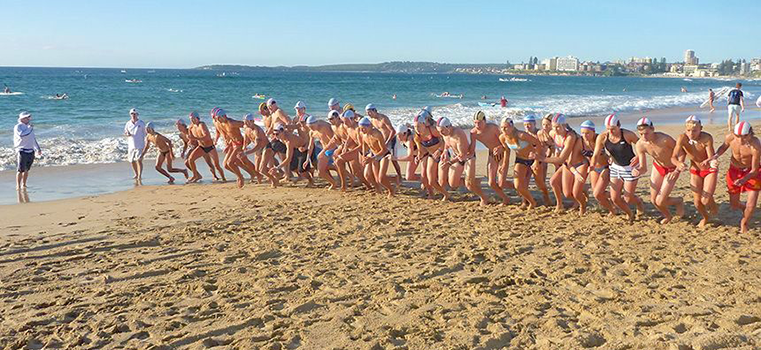Mark Reed, DPM
DABFAS FAPWCA

714-528-3668
Shoe Design 101
Design in Running, Court, and Fitness Shoes
As recently as thirty-five years ago, athletic shoes consisted of just a few shoes that were used for a wide variety of athletic events. There were a few tennis and basketball shoes. There were no shoes marketed specifically as walking shoes. Aerobics or fitness shoes were nonexistent. Running shoes only amounted to a few in number.
However, in today's athletic shoe stores, the number of brands and styles of shoes for all types of sports is staggering. There are shoes made specifically for wrestling, rock climbing and windsurfing in addition to the more common sports such as running, basketball, tennis, racquetball, aerobic dance and walking. In the running shoe market alone, there are nine major shoe manufacturers with each manufacturer having about five to ten running shoe models within their line. Even though the increased selection of shoes increases the possibility of finding just the right shoe for each set of feet, the large selection of models creates a large degree of confusion among the consumer.
It is actually this diversity and complexity within athletic shoes that is their most interesting aspect. Shoes that have different shapes, are made of different materials, and which are put together by different construction methods all will function on the foot differently. The purpose of this article is to explain the major structural differences between the three broadest categories of athletic shoes (i.e. running shoes, court shoes and fitness shoes) so that their functional differences may be better appreciated.
Running Shoes
Running, like walking, is considered a straight ahead sport since it involves no sudden stops, turns or other maneuvers. Most runners land on their heels and then propel off of their toes. This heel to toe cycle is repeated hundreds and thousands of times every running session. The major biomechanical differences between running and walking are that in running there is always one point during running when both feet are off the ground and also during running the impact forces which the foot absorbs are at least twice as great as that found in walking.
Most runners strike on the outside of the heel, rapidly pronate, stay pronated for a brief instant and then resupinate as the heel leaves the ground during the push-off phase of running. [Pronation of the foot is a rolling inward of the ankle in which the arch flattens. Supination of the foot is a rolling outward of the ankle in which the arch increases in height.] Due to the large degree of variation within the population, there are a large number of runners who pronate excessively during running causing a multitude of running injuries such as posterior tibial tendinitis, plantar fasciitis and pes anserinus bursitis, to name a few.
Because of the increased impact forces and increased excessive pronation seen in running, running shoes must be designed both to help reduce excessive shock to the body and also help reduce pronation in the foot (Fig. 1). Unfortunately, the same shoe design characteristics that are best at helping to control pronation also tend to lessen the ability of the shoe to cushion the foot. And conversely, any shoe designed to maximize the cushioning of the foot during running will tend to have decreased ability in helping to control pronation.
To better understand how the characteristics of running shoe design affect foot function it is important to detail the structural components of the running shoe. Every shoe is made of two basic parts, the sole and the upper. The sole protects the foot from the ground and provides a layer of cushion for the foot. The upper covers the top and sides of the foot to provide a comfortable fit between the foot and the shoe and to improve stability of the foot on the shoe sole.
In the running shoe, the sole is made up of two distinct layers, the outersole and the midsole. The outersole is the part of the sole that contacts the ground. It is made of a thin layer of relatively hard, abrasion resistant material which functions to resist wear, provide traction and allow flexibility in the forefoot for propulsion.
Many running shoes use a rubber compound with a high carbon content in the heel and forefoot area, which is similar in composition to an automobile tire, so that the outersole will resist the abrasion that comes from the heel striking the ground. Running shoe outersoles also are constructed with studs or ridges in the midfoot and forefoot area to aid traction on soft or slippery surfaces, such as wet grass or slick pavement. In addition, most running shoe outer soles also incorporate some form of transverse grooves placed in the area of the forefoot so that the shoe will be more flexible in the forefoot once the heel leaves the ground during the push-off phase
The midsole, however, is the part of the running shoe that either makes it work well or makes it work poorly. The midsole is sandwiched between the upper and the outersole. The upper is glued or bonded to the top surface of the midsole. The midsole is the most important part of the running shoe because its design and construction largely determine whether the running shoe will be a shoe which is good at providing cushioning, good at controlling pronation, good for heavy runners or good for nothing.
Running shoe midsoles are designed so that there is thick cushioning under both the heel and forefoot to help provide cushioning to the heel and forefoot. The total height of the midsole and outersole under the heel is generally about 1 inch and the total height of the midsole and outersole under the forefoot is about 5/8"". The 3/8"" difference of sole thickness between the heel and forefoot in many running shoes tends to be preferred by most runners and also reduces the strain on the Achilles tendon, therefore, reducing the likelihood of Achilles tendinitis.
The midsole may be constructed of various materials to provide cushioning and pronation control. The two most common materials used in the construction of running shoe midsoles is ethyl vinyl acetate (EVA) or polyurethane (PU). EVA is a copolymer of ethylene and vinyl acetate that has microscopic air bubbles within it that makes it lightweight and very cushiony. PU also has a microscopic air bubble structure like EVA but is generally firmer and more resistant to compression than EVA.
Running shoe manufacturers use combinations of different densities of EVA and/or PU within the midsole of the shoe, along with gel packets, air bags, plastic plates and other exotic materials to provide what they believe is the proper amount of cushioning and pronation control for the shoe. Many running shoe midsoles have a firmer midsole material or a hard plate under the medial heel and a softer midsole material under the lateral heel so that the medial heel resists compression more than the lateral heel when the heel strikes the ground in running [Medial is toward the big toe, lateral is toward the little toe]. This ""dynamic varus wedge"" effect does effectively help control foot pronation to some extent. The softest midsole material is generally placed under the forefoot since most runners find that good forefoot cushioning is a very desirable feature when running on hard surfaces.
The upper of the running shoe is usually made of a combination of lightweight nylon and thin synthetic or natural leather to reduce the total weight of the shoe. Since running involves at least a thousand footstrikes per mile, a lightweight running shoe is critical to insure that the runner can move at a faster pace with less fatigue. One drawback to the lightweight materials used in running shoe uppers is that they all tend to suffer in side to side stability since the thin material in the upper is ineffective at resisting medial and lateral shifting of the foot on top of the sole of the shoe.
The upper of a running shoe also incorporates a stiff heel counter that is commonly stiffer than in other athletic shoes to help control excessive pronation or supination during running. Most running shoes also incorporate a raised padded ""Achilles tendon protector"" within the design of their upper to supposedly help protect the Achilles tendon. Most runners find that the ""Achilles tendon protector"" serves only as a convenient handle by which to pull their running shoes on with and serves little importance in protecting the Achilles tendon from injury.
Within the interior of today's running shoes are removable insoles known as sockliners. Sockliners serve to cushion the foot and provide some arch support. Many sockliners in more expensive running shoes serve to support the arch of the foot more effectively than those seen in cheaper shoes. Nearly all sockliners can be removed easily from the shoes so that custom foot orthoses may be added to the shoe to replace the sockliner if needed.
One more important fact about running shoe design is that running shoes make excellent walking shoes. Since running and walking are both straight-ahead activities, their basic shoe designs are quite similar. In fact, I recommend running shoes for my patients who walk for exercise in favor of many walking shoes since running shoes are lighter, more comfortable and biomechanically more efficient at helping control excessive foot pronation than the majority of walking shoes.
Court Shoes
Court sports include tennis, racquetball, basketball, squash, badminton and volleyball. Because court sports require sudden starts, stops and side to side motions, the best shoe construction for court sports is much different than that required for running (Fig. 2). The sudden side-to-side movements seen in court sports tend to make the foot slide forcefully either in a medial or lateral direction on the shoe sole. For example, if a tennis player is moving quickly toward the right and then uses the right foot to come to a complete stop, the foot will tend to slide laterally on top of the shoe sole. The only thing preventing the foot from sliding directly laterally off of the shoe sole is the upper of that shoe. It is because of this necessity for side-to-side stability that court shoes must be constructed much differently than running shoes.
Like running shoes, court shoes come in all shapes and sizes depending not only on the sport which the shoe is designed for but also on the manufacturer. Unlike running shoes in which the upper of the shoe always ends just below the ankle bones (i.e. a low-cut shoe), the upper of court shoes may extend partially over the ankle bones to about the ankle joint level (i.e. a mid-cut shoe) or may extend above the ankle bones completely covering them (i.e. a high-cut or high-top shoe). Many basketball shoes tend to be made of a higher cut than other court shoes due to the relatively great frequency of ankle sprains seen with basketball. All other shoe design parameters being equal, the higher the cut of the upper of the shoe, the better that shoe will be at preventing ankle instability during the activity and the heavier that shoe will be.
Since the goal in a well designed court shoe is to make the upper hold the foot on top of the sole, the uppers of court shoes are thicker and made of heavier weight materials than running shoes or fitness shoes. The uppers of court shoes are constructed of thicker leathers or synthetic leathers than either running or fitness shoes. Lightweight and thin materials such as nylon are used less frequently in court shoe uppers. In addition, many tennis shoes may have an extra layer of synthetic or natural leather toe box reinforcement to prevent the upper from wearing through in the toe box area from the scuffing which occurs during tennis serves.
Many court shoes also are constructed with an extended outersole or midsole which rises up on the sides to the bottom edge of the upper to give added strength to the sole/upper interface. As a result of the use of thicker upper materials and the side reinforcement of the sole up onto the upper, court shoes are nearly always heavier than the same size of running shoe.
The outersole of court shoes are usually made of a non-marking rubber compound for traction on outdoor or indoor courts. Court shoes have a much lower profile of tread patterns on their outersoles than running shoes since court sports are nearly always played on a dry, flat and smooth surface. In addition, court shoes often have a circular designs constructed into the outer sole under the forefoot area of the sole to act as a ""pivot point"" for the shoe during rotational motions of the foot on the playing surface
Like running shoes, court shoe midsoles are predominantly made of either EVA or PU. However, the midsoles of court shoes are firmer and thinner than running shoes to reduce the instability of the court shoe during side-to-side movements. Shoes with firmer soles have better side-to-side stability since the force of body weight through the foot will not deform a firm sole as much compared to a cushiony sole. The more that a shoe sole deforms under the forces which the foot exert on it during aggressive maneuvers, the more likely the shoe sole will tilt to one side or the other which may lead to either pronation or supination instability at the ankle joint complex.
Thicker soles increase the height of the foot and ankle from the ground that, in turn, increases the distance of the ankle joint complex from the ground. The higher that the ankle joint complex is from the ground, the longer is the lever arm for the reaction force from the ground to cause a either a pronation or supination force on the foot and ankle. Therefore, the thinner soles of court shoes decrease the likelihood of ankle sprains since the ground has a much shorter lever arm to produce pronation or supination forces on the ankle joint complex.
Fitness Shoes
About fifteen to twenty years ago there was a dramatic increase in the popularity of aerobic dance. At that time, the shoes worn for aerobic dance were either running or court shoes. Unfortunately, since running and court shoes were not specifically designed for the demands of aerobic dance, many injuries occurred. Those aerobic dancers wearing running shoes had good cushion to the forefoot, but suffered from ankle sprains due to the lack of lateral stability in running shoes. Those dancers wearing court shoes had good side-to-side stability, but suffered from painful symptoms in the forefoot due to the lack of cushioning in the forefoot in court shoes.
Shoe manufacturers responded with the aerobics shoe that blended technologies from both the running shoe and court shoe. The result was a shoe with a midsole thickness and degree of cushioning midway between that of court shoes and running shoes. In addition, the aerobics shoe had an upper that was midway between the court and running shoe in material weight and thickness.
Today, shoes made for aerobic dance are very similar in design to those shoes made for the various activities available in a health or fitness club. Therefore, shoes made for aerobic dance and cross-training are now known as "fitness shoes". Understanding the construction of fitness shoes is important since they not only are a very popular style of shoe, but their relatively recent birth into the shoe marketplace demonstrates the ability of shoe manufacturers to design a totally new and unique style of shoe to meet the biomechanical demands of a new sport (Fig. 3).
The fitness shoe has been designed using technological features from both running shoes and court shoes to create a shoe that is actually a better all-purpose shoe than either the court shoe or the running shoe. It is lighter in weight and more well cushioned than the court shoe and much more able to resist side to side movements of the foot than a running shoe.
The upper of fitness shoes can range from a low-cut to a high-cut with the most popular height being a mid-cut. The mid-cut upper is a very popular style in fitness shoes since it does provide extra lateral stability without adding a great deal of extra weight to the shoe. The fitness shoe upper is made from a combination of thinner natural or synthetic leather and nylon that decreases the weight of the shoe compared to a court shoe. However, since the fitness shoe upper is more substantial than the upper found in running shoes, the lateral stability of the fitness shoe is greater than in the running shoe.
Like court shoes, many fitness shoes use an extended outersole or midsole on the medial and lateral sides of the upper to provide extra bonding strength to the sole/upper junction. The extended midsole is now very popular in fitness shoes and does provide an extra degree of lateral stability to the shoe.
The outersole of fitness shoes are very similar to court shoes being made from non-marking rubber compounds in a low profile. However, the midsole in a fitness shoe is thicker than that seen in the court shoe to provide extra cushioning to the forefoot and rearfoot during aerobic dance, running and other impact activities. Even though the midsole in a fitness shoe is not as thick as that in running shoes, the fitness shoe can safely have a thicker midsole in its design since the side to side activities seen in fitness shoes are not as aggressive as that seen in court sports.
Conclusion
Certainly in the case of all the shoes described, it is clear that the structure of the shoe determines how the shoe will affect the function of the foot within that shoe. Whether it is the composition of the outer sole, midsole or upper, or it is how the sole is attached to the upper, or it is any other shoe design parameter, the construction of athletic shoes must match the biomechanical requirements of the specific athletic activity in order for the shoe to be useful and desirable for the athlete...
DISCLAIMER: MATERIAL ON THIS SITE IS BEING PROVIDED FOR EDUCATIONAL AND INFORMATION PURPOSES AND IS NOT MEANT TO REPLACE THE DIAGNOSIS OR CARE PROVIDED BY YOUR OWN MEDICAL PROFESSIONAL. This information should not be used for diagnosing or treating a health problem or disease or prescribing any medication. Visit a health care professional to proceed with any treatment for a health problem.















